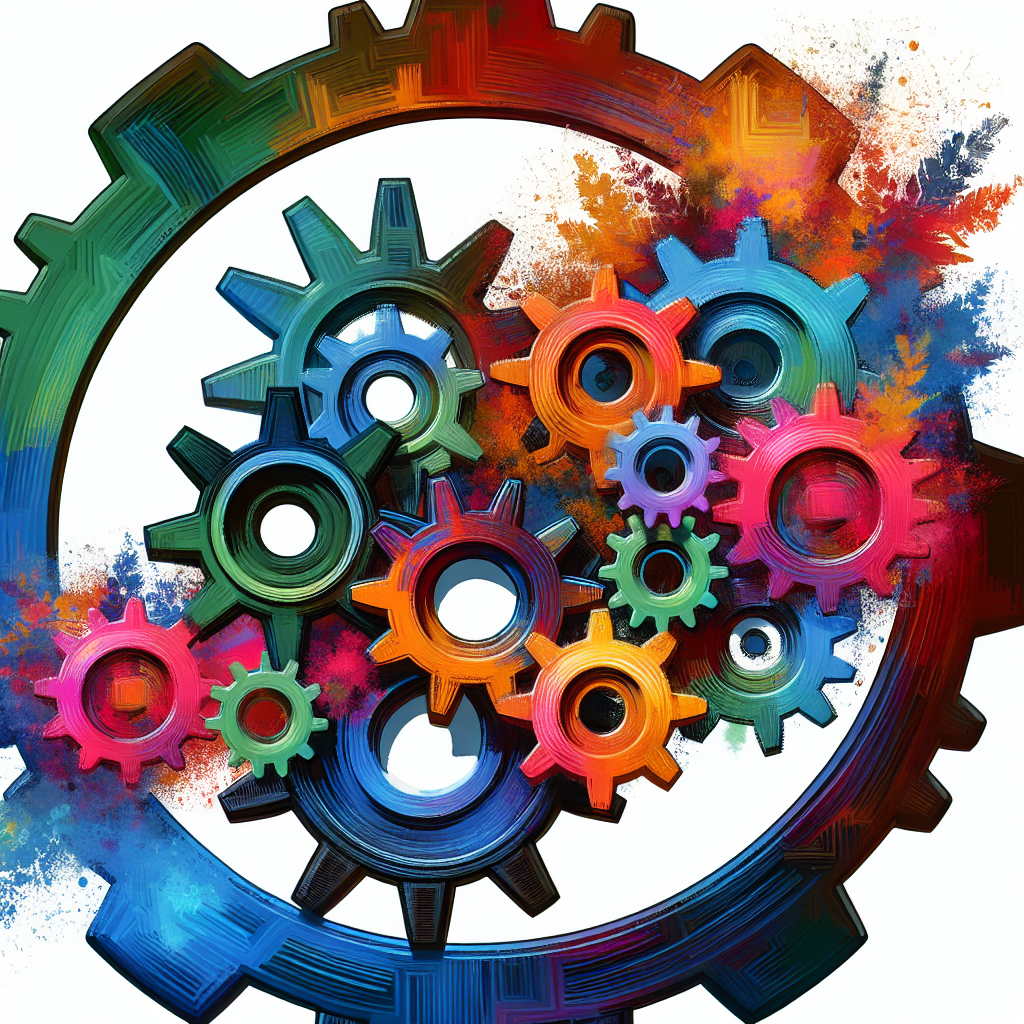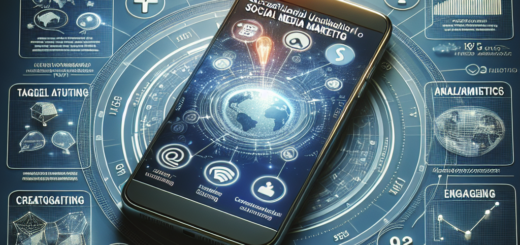Influencer marketing with automation
If you’ve ever wondered how influential figures manage to seamlessly promote products and engage with their audience, the answer lies in influencer marketing with automation. This powerful combination allows influencers to effectively reach their target audience, increase brand awareness, and drive sales. From influencer collaborations to micro-influencers and influencer marketing platforms, this article dives into the various aspects of influencer marketing and how automation plays a key role in streamlining and enhancing these strategies. Whether you’re a brand looking to leverage influencers or an aspiring influencer yourself, understanding the ins and outs of influencer marketing with automation can take your marketing efforts to new heights.
Influencer Marketing
In today’s digital landscape, influencer marketing has become a powerful strategy for businesses to reach their target audience and build brand awareness. Leveraging the popularity and credibility of influencers, businesses can tap into their large and engaged online following to promote their products or services. In this article, we will explore the various aspects of influencer marketing and how automation can enhance its effectiveness.

Influencer Collaborations
One of the key pillars of influencer marketing is collaborating with influencers who align with your brand values and target audience. By partnering with influencers whose personal brand and content resonate with your target customers, you can tap into their influence to raise awareness and drive engagement for your brand. Influencer collaborations can take various forms, such as sponsored posts, product reviews, giveaways, or even long-term brand ambassadorships.
Influencer Outreach
Finding and reaching out to influencers can be a time-consuming and labor-intensive process. However, automation tools can streamline and automate the influencer outreach process, making it more efficient and scalable. These tools can help you identify potential influencers based on their audience demographics, engagement rates, and content relevance. By automating the outreach process, you can save time and ensure that you reach out to the right influencers for your brand.
Micro-influencers
While macro-influencers with millions of followers may seem like the obvious choice for influencer marketing, micro-influencers can often yield better results. Micro-influencers have a smaller but more niche and engaged audience. Their followers trust their recommendations and are more likely to take action. Automation tools can help you identify and connect with micro-influencers who have the right audience and content to drive meaningful engagement for your brand.
Influencer Marketing Platforms
To simplify the influencer marketing process and manage influencer campaigns more efficiently, many businesses turn to influencer marketing platforms. These platforms provide a centralized space for businesses to find and collaborate with influencers, manage campaigns, and track performance metrics. They often offer features such as influencer discovery, campaign management, content approval workflows, and performance tracking. Utilizing an influencer marketing platform can streamline your influencer marketing efforts and enhance collaboration between brands and influencers.
Automation in Influencer Marketing
Automation has revolutionized various aspects of digital marketing, and influencer marketing is no exception. By leveraging automation tools and technologies, businesses can streamline and optimize their influencer marketing efforts, saving time and resources.
Streamlining Influencer Selection
One of the initial challenges in influencer marketing is finding the right influencers who align with your brand values and target audience. Automation tools can simplify and expedite the influencer selection process. These tools utilize data and analytics to identify influencers with the right demographics, engagement rates, and content relevance. By automating the influencer selection process, businesses can efficiently identify and connect with influencers who can effectively promote their brand.
Automating Outreach
Once you have identified the influencers you want to collaborate with, the next step is reaching out to them. Automation tools can automate the outreach process, allowing businesses to send personalized and customized messages at scale. These tools often provide customizable outreach templates, email marketing automation, and customer relationship management (CRM) software integration. By automating outreach, businesses can efficiently manage communication with influencers and increase the chances of securing partnerships.
Managing Influencer Campaigns
Managing influencer campaigns can be a complex and time-consuming process. From setting campaign objectives to creating campaign briefs, there are multiple tasks involved. Automation tools can simplify campaign management by providing centralized platforms where businesses can define campaign objectives, communicate requirements to influencers, and monitor campaign progress. These tools can also automate content approvals, ensuring that the brand maintains control over the messaging and visuals that influencers post.
Tracking Influencer Performance
Measuring the success of influencer marketing campaigns is essential to understand the impact of your efforts and make informed decisions for future campaigns. Automation tools offer various features for tracking influencer performance, such as tracking engagement metrics, monitoring conversions and return on investment (ROI), and utilizing analytics tools. By automating performance tracking, businesses can gain valuable insights into the effectiveness of their influencer partnerships and optimize their strategies accordingly.
Benefits of Using Automation in Influencer Marketing
The integration of automation in influencer marketing offers several notable benefits for businesses looking to maximize the efficiency and effectiveness of their campaigns.
Increased Efficiency
Automation tools streamline various processes involved in influencer marketing, from influencer selection to campaign management. These tools eliminate manual and repetitive tasks, allowing businesses to focus on strategic planning and high-value activities. By increasing efficiency, businesses can achieve better results with less effort and resources.
Time-saving
Manual influencer outreach and campaign management can be time-consuming, especially when targeting multiple influencers or running concurrent campaigns. Automation tools enable businesses to execute these tasks at scale, saving significant amounts of time. With saved time, businesses can allocate resources to other marketing initiatives or focus on creating compelling content.
Cost-effective
Influencer marketing can be expensive, especially when working with high-profile influencers. Automation tools provide cost-effective solutions by streamlining processes and reducing the need for manual labor. With automation, businesses can achieve higher ROI on their influencer marketing investments, making it a cost-effective strategy for promoting their products or services.
Improved Targeting
Automation tools leverage data and analytics to identify influencers who match your target audience’s demographics, interests, and preferences. By using these insights, businesses can collaborate with influencers who have a strong alignment with their brand and are more likely to drive engagement and conversions. Improved targeting leads to more effective influencer campaigns and better results.
Choosing the Right Influencer Marketing Automation Tool
Selecting the right influencer marketing automation tool is critical to the success of your influencer marketing efforts. Here are some factors to consider when choosing a tool:
Identify Your Goals
Before selecting an automation tool, define your influencer marketing goals. Do you want to increase brand awareness, drive sales, or build customer loyalty? Different tools offer different features and capabilities, so understanding your goals will help you choose a tool that aligns with your objectives.
Consider Your Budget
Automation tools vary in price, ranging from free options to enterprise-level solutions. Consider your budget and evaluate the features and benefits each tool offers within that budget. Keep in mind that a higher price tag doesn’t always guarantee better performance, so find a tool that provides value for money.
Evaluate Features
Look for automation tools that offer the features you need to streamline and optimize your influencer marketing efforts. Consider features such as influencer discovery, outreach automation, content approval workflows, campaign management, and performance tracking. Choose a tool that offers the functionality required to achieve your influencer marketing goals.
Read User Reviews
User reviews are a valuable source of information when choosing an influencer marketing automation tool. They provide insights into the tool’s ease of use, reliability, customer support, and overall satisfaction. Read both positive and negative reviews to get a comprehensive understanding of the tool’s strengths and weaknesses.
Streamlining Influencer Selection
Defining Your Target Audience
To streamline influencer selection, start by clearly defining your target audience. Identify their demographics, interests, preferences, and pain points. By understanding your audience, you can identify influencers who have a significant following within your target market.
Using Data and Analytics
Leverage data and analytics to identify influencers who align with your target audience. Look for influencers with high engagement rates, relevant content, and a track record of working with brands in your industry. Automation tools can provide insights and analytics to help you make data-driven decisions in selecting the right influencers.
Utilizing Influencer Databases
Influencer databases are comprehensive directories of influencers across different niches. These databases usually provide detailed information about each influencer, such as their audience size, engagement metrics, content types, and contact information. By utilizing influencer databases, businesses can access a wealth of information to support their influencer selection process.
Filtering and Sorting Influencers
Automation tools offer advanced filtering and sorting options to help businesses narrow down their list of potential influencers. Filter influencers based on criteria such as follower count, engagement rates, location, content relevance, and previous brand partnerships. By applying these filters, businesses can identify the influencers who are most likely to resonate with their target audience.
Automating Outreach
Customizing Outreach Templates
Automation tools often provide customizable outreach templates that businesses can utilize for influencer outreach. These templates can be personalized to include the influencer’s name, social media handles, and specific collaboration details. Customizing outreach templates ensures that each outreach message feels genuine and tailored to the influencer.
Using Email Marketing Automation
Email marketing automation tools integrate with influencer marketing platforms to automate outreach. These tools enable businesses to schedule and send personalized outreach emails at scale. Email marketing automation offers features such as personalized merge tags, email sequences, and follow-up reminders, making the outreach process more efficient and organized.
Utilizing CRM Software
Customer relationship management (CRM) software is useful for managing influencer relationships and communications. CRM tools provide a centralized space to store influencer contact details, track email conversations, and schedule follow-ups. By utilizing CRM software, businesses can ensure that they maintain a history of the influencer interactions and easily access relevant information.
Scheduling Outreach Sequences
Outreach sequences are a series of personalized emails sent to influencers to initiate and maintain communication. Automation tools allow businesses to schedule and automate these outreach sequences. Sequences can include initial outreach, follow-ups, and reminders. By automating outreach sequences, businesses can ensure consistent and timely communication with influencers.
Managing Influencer Campaigns

Setting Campaign Objectives
Clearly defining campaign objectives is essential to the success of your influencer marketing campaigns. Determine what you want to achieve with each campaign, whether it’s increased brand awareness, higher conversion rates, or user-generated content. By setting specific and measurable objectives, you can measure the success of your campaigns accurately.
Creating Campaign Briefs
A campaign brief outlines the guidelines, requirements, and deliverables for influencers participating in a campaign. Automation tools often provide templates or frameworks for creating campaign briefs. These briefs ensure that influencers have a clear understanding of the campaign’s objectives, timeline, and deliverables, allowing for smoother collaboration.
Automating Content Approvals
Content approval is a crucial step in influencer marketing campaigns to ensure that the content meets the brand’s standards and aligns with its messaging. Automation tools offer content approval workflows that allow businesses to review and approve influencer content efficiently. By automating content approvals, businesses can maintain control over the messaging and visuals while expediting the process.
Monitoring Campaign Progress
Automation tools provide real-time campaign monitoring features, enabling businesses to track the progress and performance of their influencer campaigns. These tools offer metrics such as reach, engagement, click-through rates, conversions, and return on investment. By monitoring campaign progress, businesses can identify areas for improvement and make data-driven optimizations.
Tracking Influencer Performance
Tracking Engagement Metrics
Engagement metrics, such as likes, comments, shares, and click-through rates, indicate the level of audience interaction with influencer content. Automation tools provide features to track and analyze engagement metrics for influencer posts. By monitoring these metrics, businesses can assess the effectiveness of their partnerships and influencers in driving audience engagement.
Monitoring Conversions and ROI
Tracking conversions and calculating return on investment (ROI) are crucial for assessing the financial impact of influencer marketing. Automation tools provide mechanisms to track conversions by utilizing unique tracking links or promo codes. By monitoring conversions and calculating ROI, businesses can measure the direct impact of their influencer collaborations on their bottom line.
Using Analytics Tools
Analytics tools help businesses gain deeper insights into their influencer marketing performance. Automation tools often integrate with analytics platforms, such as Google Analytics, to provide comprehensive data and reporting. By utilizing these analytics tools, businesses can analyze the impact of their influencer campaigns and make data-driven decisions for future strategies.
Analyzing KPIs
Key performance indicators (KPIs) are metrics that directly align with your influencer marketing goals. Automation tools allow businesses to define and track KPIs specific to their objectives. By analyzing KPIs, businesses can evaluate the success of their influencer partnerships and make informed decisions regarding future collaborations.
Challenges of Automation in Influencer Marketing
While automation offers numerous benefits for influencer marketing, it also presents certain challenges that businesses need to navigate.
Maintaining Personalization
One of the main challenges is maintaining personalization when using automation tools. Influencer marketing relies on authentic and genuine relationships between brands and influencers. Automation can sometimes lead to generic outreach or pre-approved content, which may dilute the personal touch. Businesses must strike a balance between automation and personalization to ensure that influencer collaborations feel authentic.
Balancing Automation and Authenticity
Authenticity is a cornerstone of influencer marketing. Automation should complement and enhance authenticity, rather than undermine it. Balancing automation and authenticity requires careful consideration of the tone, language, and visual aesthetic of influencer collaborations. Businesses must ensure that automation tools support and reinforce the authenticity of their influencer partnerships.
Managing Multiple Influencers
For businesses running multiple influencer campaigns simultaneously, managing communication and deliverables with multiple influencers can be challenging. Automation tools can simplify the management process, but effective communication and coordination are still crucial. Businesses must establish clear channels of communication and create streamlined processes to manage multiple influencer partnerships efficiently.
Dealing with Technical Glitches
Automation tools are reliant on technology, and technical glitches can occur. These glitches may result in delayed outreach, content approvals, or performance tracking. Businesses must have backup plans in place and be prepared to address any technical issues swiftly to minimize disruptions in their influencer marketing efforts.
Best Practices for Using Automation in Influencer Marketing
To maximize the benefits of automation in influencer marketing, here are some best practices to follow:
Maintain Authenticity and Transparency
Automation should enhance and support the authenticity and transparency of influencer collaborations. Avoid using generic templates or automated responses that may come across as impersonal. Instead, focus on creating genuine and meaningful connections with influencers to generate authentic content that resonates with your target audience.
Establish Clear Campaign Guidelines
Provide clear campaign guidelines and expectations to influencers to avoid miscommunication or misunderstandings. Clearly communicate the campaign objectives, content requirements, delivery timelines, and any specific guidelines. Establishing clear guidelines ensures that influencers have a clear understanding of your expectations and can deliver content that meets your brand standards.
Regularly Review and Optimize Automation Processes
Periodically review your automation processes to identify areas for improvement. Analyze the results of your influencer campaigns, track engagement metrics, and evaluate the effectiveness of workflows and templates. Use this data to optimize and enhance your automation processes, ensuring continuous improvement of your influencer marketing strategies.
Build Meaningful Relationships with Influencers
Automation should not replace the human element in influencer marketing. Invest time and effort in building meaningful relationships with influencers. Engage with them beyond campaign collaborations, establish open lines of communication, and show genuine interest in their content and success. Building strong relationships fosters loyalty and can lead to long-term partnerships.
In conclusion, automation has revolutionized influencer marketing by streamlining processes, increasing efficiency, and enhancing targeting capabilities. By leveraging automation tools, businesses can effectively collaborate with influencers to promote their brands and reach their target audience in a cost-effective and time-saving manner. However, it is essential to balance automation with authenticity, maintain personalization, and overcome challenges to ensure successful influencer marketing campaigns. By implementing best practices and choosing the right automation tools, businesses can harness the full potential of influencer marketing to drive brand growth and success.

















It's great that you talked about how business insurance can provide financial protection against unexpected events and help ensure the…
I like that you mentioned how business insurance is essential for protecting your bottom line and the long-term viability of…